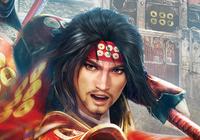Samurai Warriors: Spirit of Sanada (PC) Review
By Olivia Falk  13.07.2017
13.07.2017

Omega Force's catalogue of Warriors games has become incredibly prolific over the years, with dozens of instalments spanning many historical periods and franchises. Throughout this catalogue, they've carved out a niche for themselves in the "spectacle fighter" genre, though for the uninitiated, it may as well be the "shonen anime: the game" genre. Each title is a pure, unadulterated power fantasy, giving the player control over numerous heroes who are capable of slashing through scores of enemy soldiers with little more than a wave of their hand. While the overall gameplay tends to stay somewhat similar, the key difference is always the setting. The franchise has visited Hyrule, ancient China, and even Gundam...Gundam-land, but now it's time to make a return trip to Japan for the latest Samurai Warriors title: Spirit of Sanada.
Addressing the plot feels odd, as it manages to be engaging and interesting, while also feeling like a complete throwaway. At the end of the day, it does just feel like an excuse to throw ornately decorated samurai and ninjas at one another like a child with a new toy set. What lifts it up is its historical accuracy. Now, the game is obviously not above taking...ahem…light liberties with the source material (maybe Masayuki Sanada didn't single-handedly wipe out over 1,000 soldiers in a single skirmish), but there's still a lot to digest here for history buffs.
Taken as a reimagining of events, it acts as a sort of window into a parallel universe, where wars like the Tenshō-Jingo Conflict were fought by larger-than-life heroes outfitted with gaudy armour and flashy special attacks. There's a cool "aha" moment that happens after looking up characters like Masayuki and Nobunaga, only to discover that many of the events that occur in the game occurred in real life, albeit dramatized in the former. The battles, the betrayals, the lives and the deaths: it's all there. It's like if Michael Bay wrote a history textbook: it's crazy, flashy, and lacking in substance and nuance, but dang, is it ever nice to look at.

In a sense, the gameplay mirrors the plot in that way: it's flashy and enjoyable, but repetition can quickly set in. This is somewhat alleviated by the options that are available while fighting: normal and hyper (light and strong) attacks, combos, a "rage" meter, musou (special) attacks, blocks, counters, and more are available to decimate foes. There's a lot to play with, and on Normal difficulty, one gets the sense that the fighting follows the classic "easy to learn, hard to master" system, with button-mashing gradually being phased out as a viable strategy as things progress. On top of this, Spirit of Sanada adds a new mechanic for the series in the form of stratagems. These are special bonuses that can be triggered at predetermined times during an assault to give an advantage. For instance, in one mission, activating a stratagem caused hidden enemies to be revealed, making it easier to track them down for an objective.
However, stratagems can only be activated if the "Six Coins of the Sanada" meter is filled enough. As its name suggests, this is a gauge made up of six coins which can be filled by completing bonus objectives (feats) in previous engagements or outside of combat. Each stratagem costs one coin to use, so there are times where the player must choose between giving themselves an advantage early on in the campaign or saving it until later. Also, certain stratagems only become available by completing feats in other battles, which encourages some playstyle variation to accommodate these. Overall, though, the system works well, since it doles out combat rewards based on the player's demonstrated prowess.
The same cannot be said for the medicines that can be brought into the fray and the assorted upgrade systems. Each of these requires the use of some resource: medicines generally take fruits and herbs to make, weapons are upgraded with rocks and gems, and levelling up a character's rage and musou meters requires cold, hard cash. While the latter can be obtained in marginal quantities during battle, the others almost exclusively rely on side activities: fishing, farming, and exploration. The first two are dull, repetitive time sinks, using the same animations ad nauseum and requiring nothing more than some presses of the 'A' button.

Exploration fares a bit better, as it involves taking up to two characters out to an area to collect resources and engage small groups of enemies. The issue is that there's really no challenge to any of these sequences: the hardest foes are nameless squad leaders, as opposed to the named generals who can actually put up a fight in the main conflicts. Hell, half the time, it's not even worth it to face the enemies unless you're farming for weapon or character experience; they can easily be dashed past on horseback in favour of nabbing all the glowing blue resources on the ground.
The worst part is that ignoring these systems results in a lot of missed content in the game. There's over 60 characters to play as, but that also means that there's over 60 characters all vying for materials to buff their weapons and stats. At least there's some good motivation to keep working away; it's just a shame that such a cheap and boring method of padding is used.
Medicines also suffer from the tedium of material collection, since crafting them is often just too much work to bother with. Hunting down specific items to craft restoration medicines and invincibility potions is a yawn-inducing grind, and while the process can be sped up by purchasing already-obtained items from the in-game shop, this quickly depletes your gold. That lack of gold is a key indicator that grinding for materials to sell is just around the corner, starting the process afresh. Overall, it makes the game feel like it was designed by two different teams: one who spent its development cycle painstakingly polishing the story and combat, and another who slapped on some bland side activities and called it a day.

Speaking of perceived laziness, the most egregious case of this is the PC port. Launching the game for the first time brought up a window that recommended it get run in Windows 7 Compatibility Mode to "avoid performance degradation." An auspicious start, certainly. Despite this, the game runs like a Lamborghini in a swamp: it still looks reasonably nice, but it's not going anywhere fast. 60 FPS? Forget about it, even on the lowest settings. A quick visit to the Steam forums revealed that this is a regular issue with Warriors games, and that most players have "settled" for 30 FPS while keeping their fingers crossed that a patch may one day show up.
As for in-game, a controller is highly recommended, with in-game prompts only using controller buttons and a control style that just feels alien with a keyboard and mouse. Lastly, while it's not a problem per se, as the voice acting is quite enjoyable overall, the lack of English dubbing just feels neglectful on the part of the localisation team. All told, Spirit of Sanada definitely could have used a lot more technical polish.

Cubed3 Rating
Very Good - Bronze Award

Thankfully, Samurai Warriors: Spirit of Sanada still manages to be a compelling experience. Its lengthy campaign is still going after 27 hours of playtime, and it's clear that there's the potential for at least twice that time for those that want to learn and max out all the characters. With its story that can be enjoyed for its romanticised vision of Sengoku Japan or just as easily discarded in favour of the spectacle, there's something here even for those who don't want to consume every last bit of content. From the perspective of someone who's never played a Warriors title, it felt like a good jumping-on point to the series, and its skirmishes are short enough that playing in bite-sized chunks can stave off the sense of deja vu that can set in as things progress. If you can overlook the repetition and poor optimisation in favour of mowing down countless soldiers in increasingly spectacular fashion, you'll find one of the more entertaining history lessons in recent times.

![]() 7/10
7/10
![]() 0
(0 Votes)
0
(0 Votes)
 Out now
Out now  Out now
Out now  Out now
Out now  Out now
Out now Comments
Comments are currently disabled

 Sign In
Sign In Game Details
Game Details Subscribe to this topic
Subscribe to this topic Features
Features






 Top
Top

